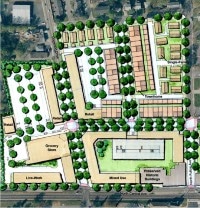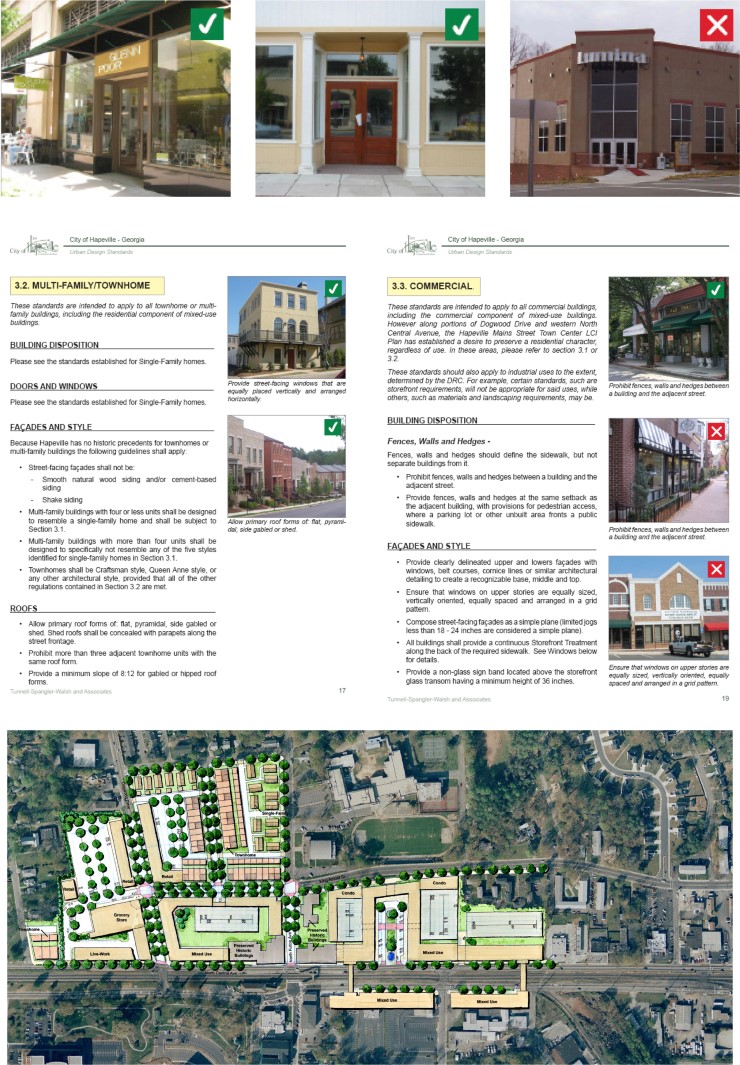
Client:
|
HAPEVILLE URBAN DESIGN STANDARDS |
| Hapeville, Georgia | |
| Following the 2005 Hapeville Main Street Town Center Livable Centers Initiative (LCI) study, TSW provided Urban Design Standards to regulate the character of the public and private realm in order to ensure that future development in the city had an appropriate scale and character to promote pedestrian and bicycle activity and build upon its historic character. The LCI study identified the need for urban design standards in Hapeville to guide development in a way that is consistent with the city’s vision for a vibrant, walkable, and sustainable community.
The standards address general guidelines for all buildings, including building height and massing, street frontage, and building setbacks. These guidelines are intended to create a cohesive and harmonious streetscape that is consistent with the scale and character of the surrounding neighborhood. The standards also include more specific guidelines for different types of residential and commercial buildings. For example, commercial buildings are encouraged to have active ground-floor uses and a variety of architectural styles and materials, while residential buildings are encouraged to include front porches and other architectural features that promote social interaction and a sense of community. In addition to the urban design standards, the LCI study also included recommendations for transportation improvements, including the creation of a pedestrian-friendly street network, the addition of bike lanes, and the creation of a network of parks and public spaces. These recommendations were intended to create a more livable and sustainable community by promoting active transportation and providing opportunities for outdoor activities and recreation. Overall, the urban design standards provided by TSW were an important tool for guiding development in Hapeville and ensuring that new development is consistent with the city’s vision for a vibrant, walkable, and sustainable community. They will help to create a cohesive and harmonious streetscape, promote active transportation, and provide opportunities for outdoor activities and recreation. |
|

